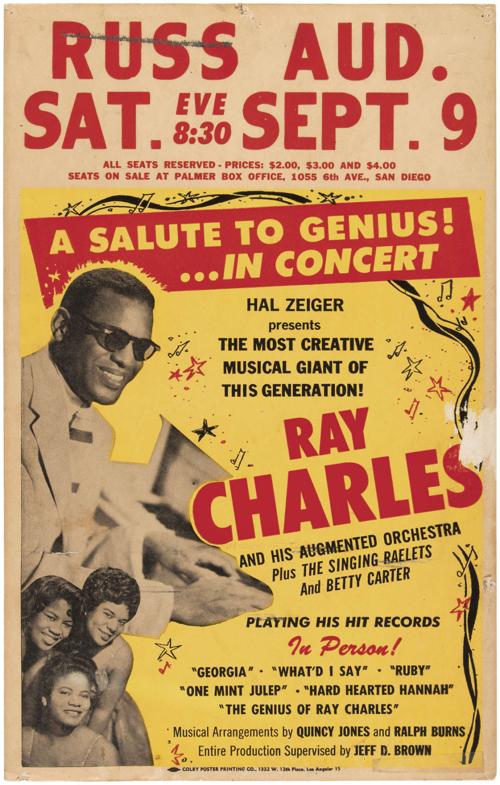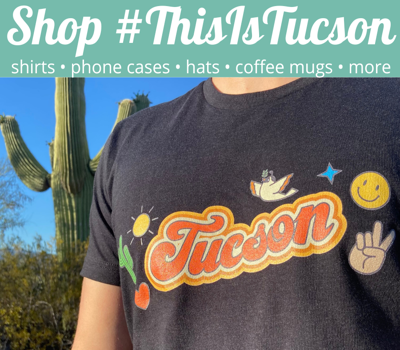WHAT: A 14-by-22.25-inch cardboard window card advertising a Ray Charles concert in San Diego on Sept. 9, 1961, brought in about $5,440 when it sold in a recent pop culture/political memorabilia auction by Hake’s Americana & Collectibles. The concert promised the artist’s greatest hits, including “Georgia” and “What’d I Say.”
MORE: Note the ticket prices of $2 to $4 and the mention of The Singing Raelets and Betty Carter, plus credit for the musical arrangements by Quincy Jones and Ralph Burns.
SMART COLLECTORS KNOW: Concert posters in excellent condition that promote major stars of the ’50s, ’60s and ’70s, such as Charles, will become even more valuable as older buyers buy back memories of their youth. They are the generation with disposable income to spend.
HOT TIP: Watch for rock star posters to experience the same trajectory. Music posters from that era are already gold, but rock posters of the ’50s, ’60s and ’70s, including those featuring the Beatles and The Doors, are not far behind and climbing. A 1969 first printing Jimi Hendrix psychedelic poster for a Toronto concert sold for a little more than $5,705 in the same sale.
BOTTOM LINE: Pop and rock posters were never made to be collectible. They were advertising, period. Anyone could take home a program. The lucky person who thought to take a top condition poster as a souvenir, and then preserve it for 50-plus years, hit the jackpot.
BOOK IT! “The Historical Apothecary Compendium: A Guide to Terms and Symbols” by Daniel A. Goldstein (Schiffer, $50) is an encyclopedic guide to terms used on apothecary bottles and other wares. Many of us admire the bottles as attractive curiosities but don’t have a clue to what labels mean. There are more than 10,000 entries, so no alchemical symbol or apothecary squiggle should remain unidentified. Written by a medical toxicologist, understood by the lay person.





